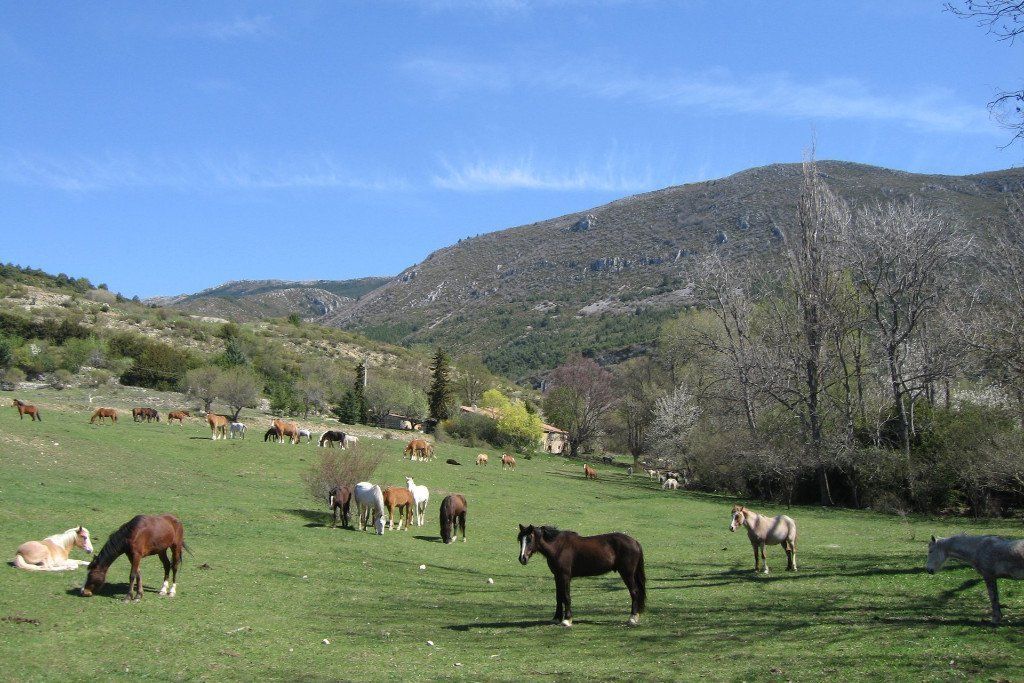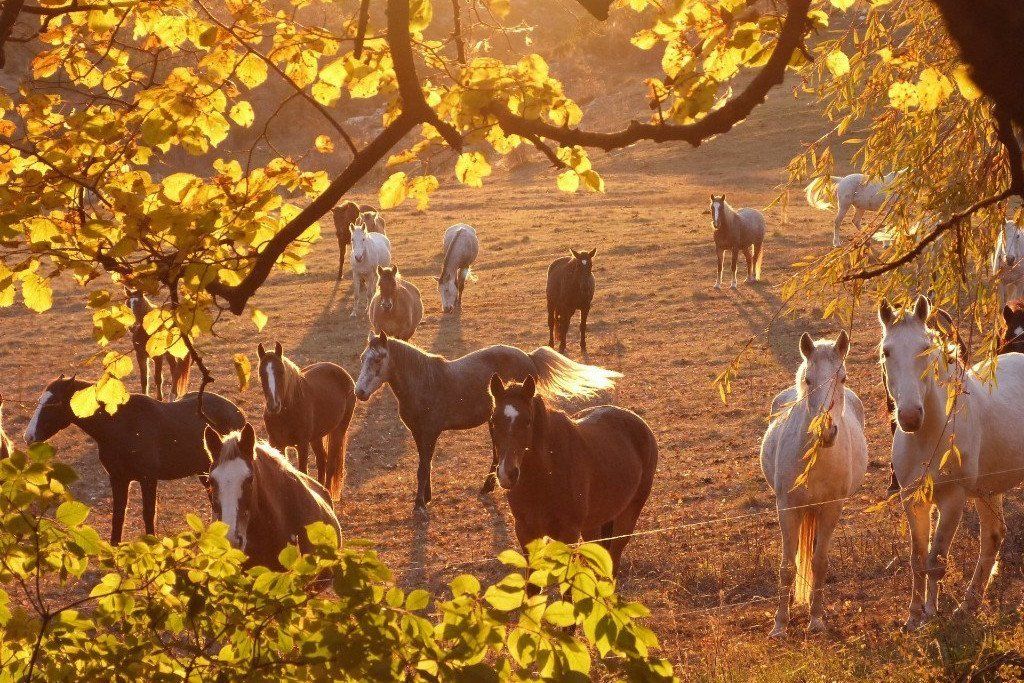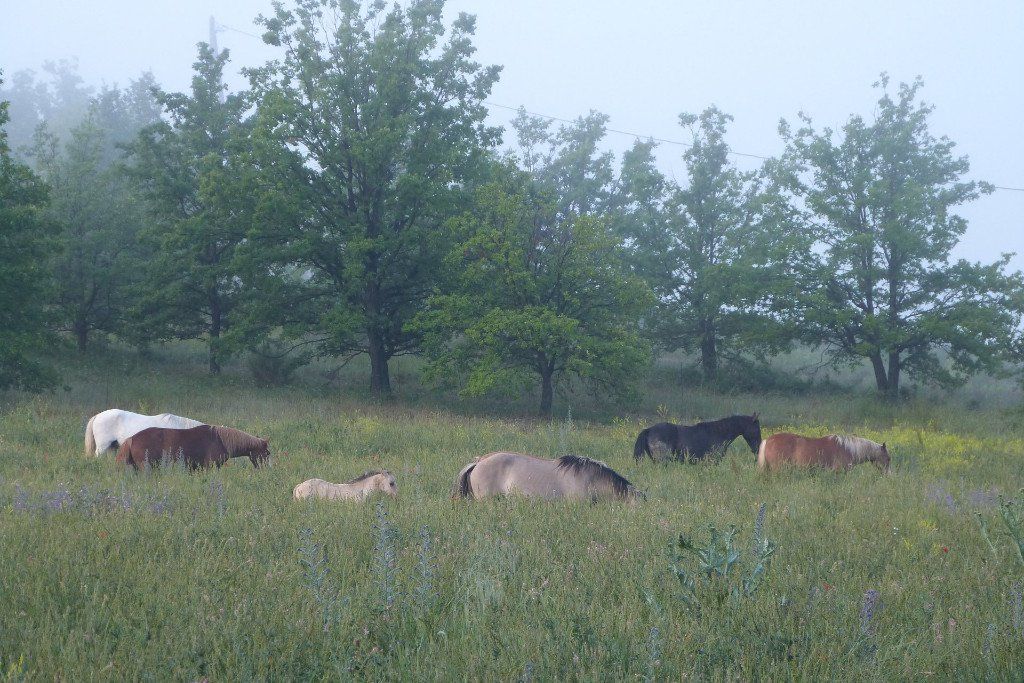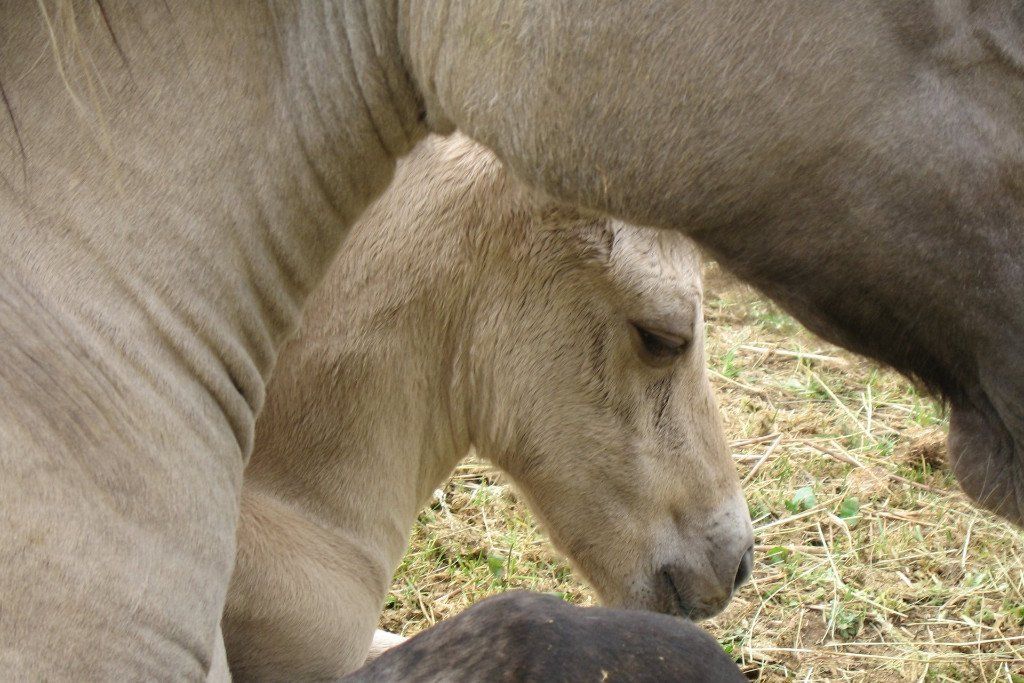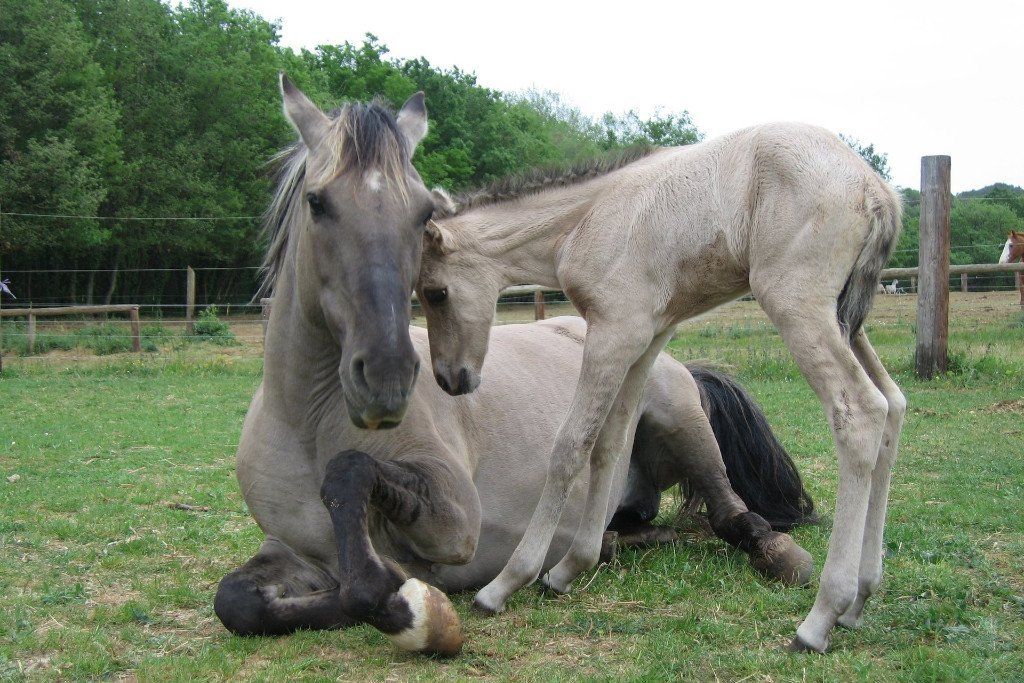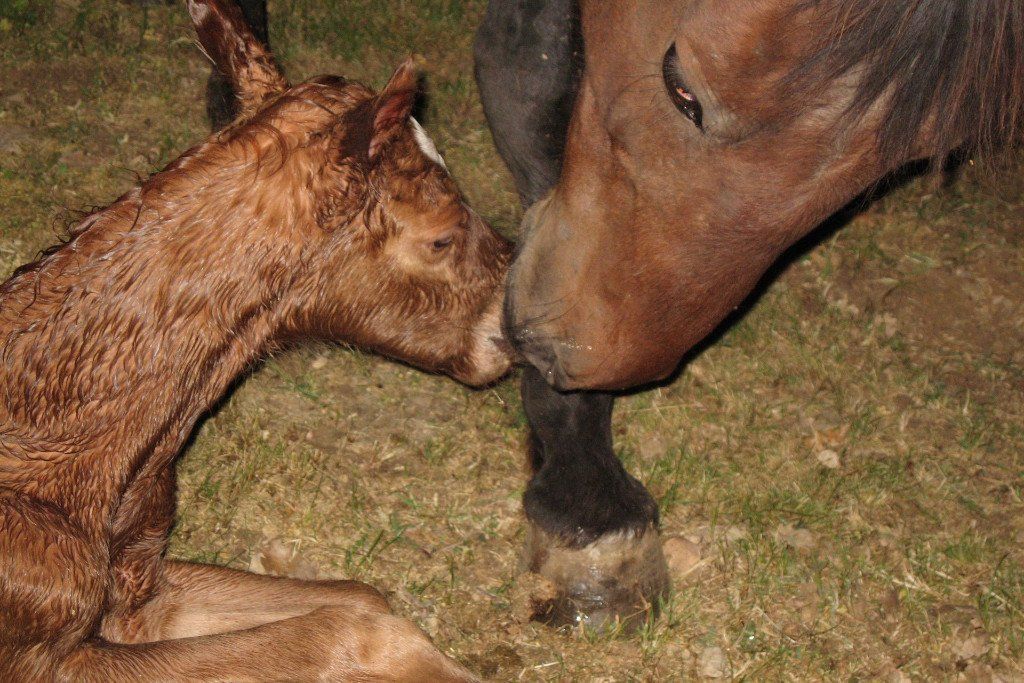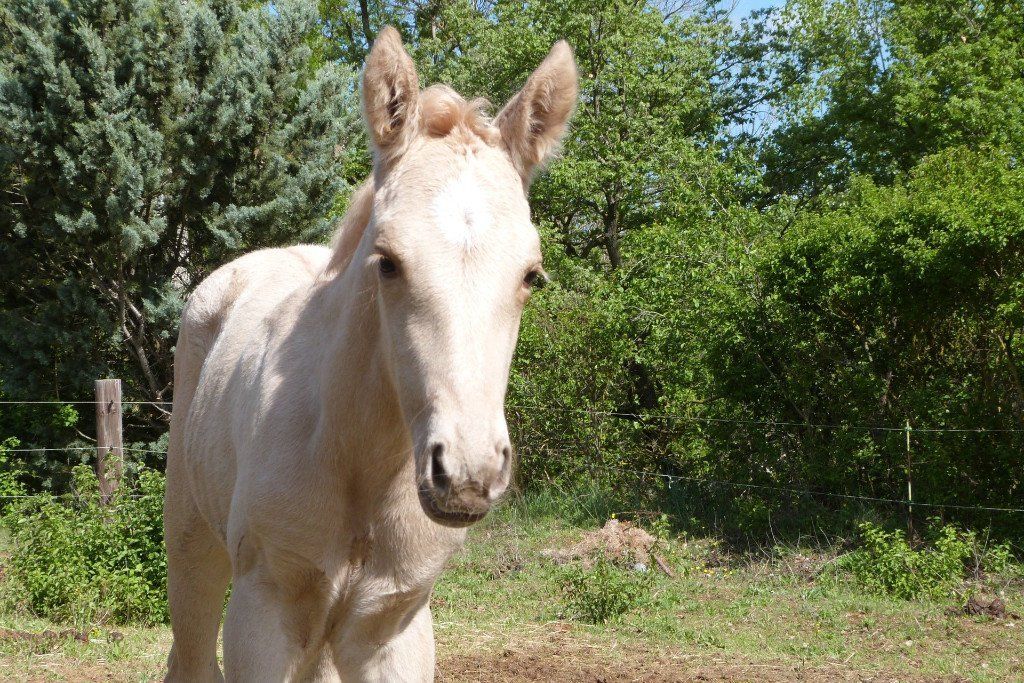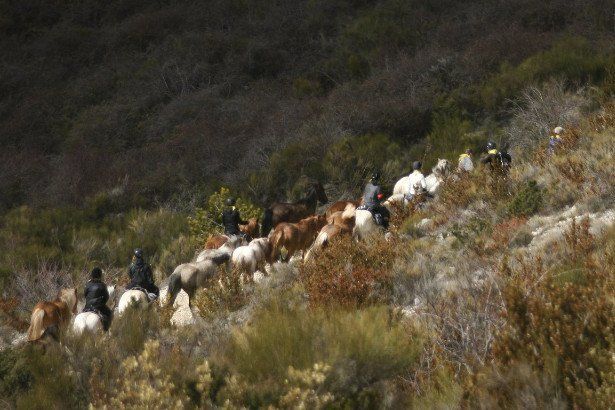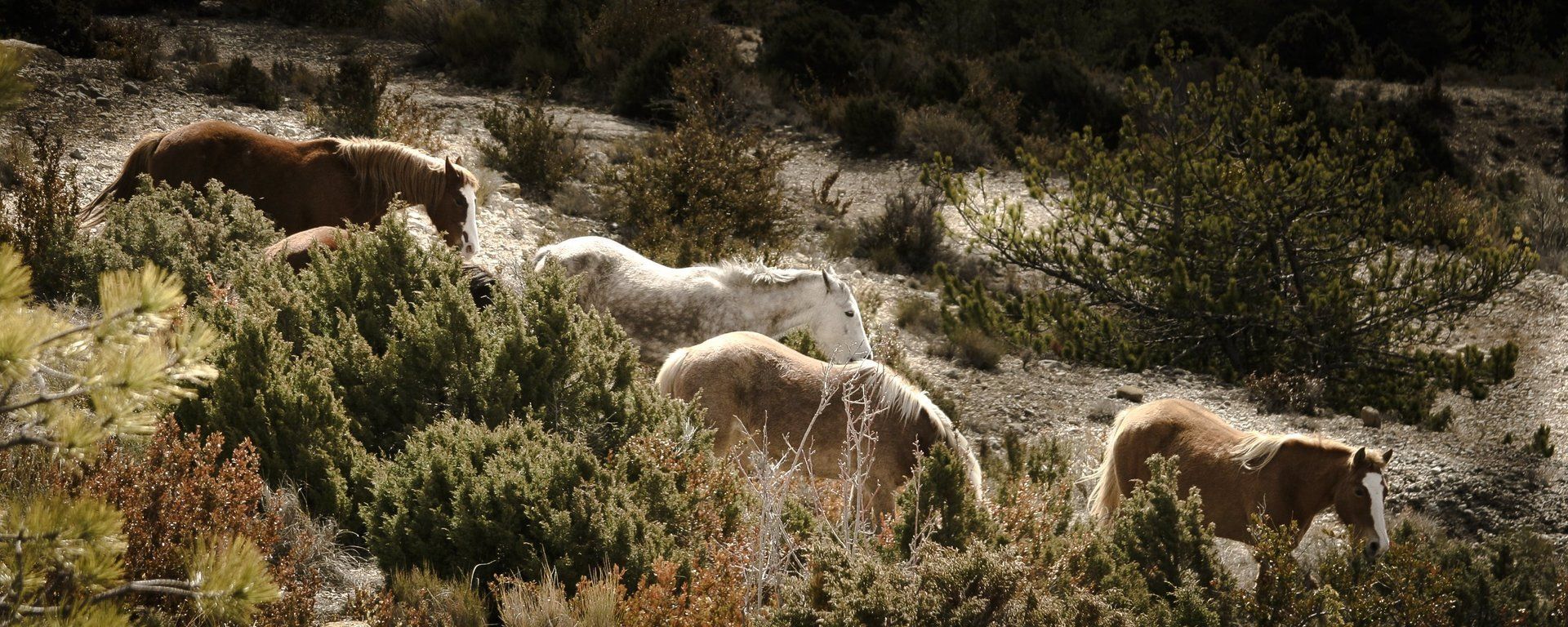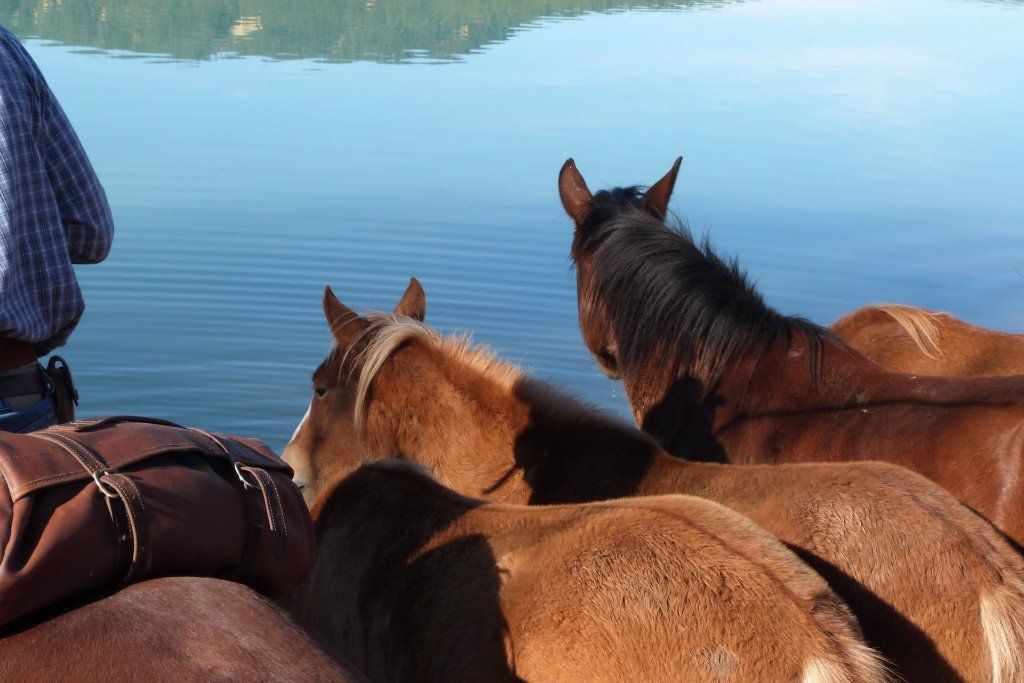Our Herd
A Horse’s Way of Life at les Chevaux du Verdon
Horses do not have a defined habitat and have a way of life based around three central concerns : their family, their herd and their natural environment. Here, you can learn more about the history of this family of horses that lives in the wide-open spaces of the Verdon.
A Family of Horses Living in the Wilderness
Horses are social animals that live in a herd. Therefore, for their mental and physical health, they need to live in a group, or herd.
By living in a herd, the horses of Les Chevaux du Verdon have a safe and stable environment. The members of the herd can build real relationships with each other and establish their own social hierarchy, allowing them to feel calm and mentally balanced. Indeed, horses that have learned to communicate and behave through social interaction with the herd are better placed to develop communication with other species and, especially, with humans.
Being able to move around is also key to a horse’s well-being. It is said that “horses eat to walk and walk to eat”. Horses, in their natural habitat, live in their surrounding environment without sticking to one particular place.
The horses of les Chevaux du Verdon live in wide-open spaces and the herd is regularly transferred from one pasture to another in order to offer them an environment which is as close as possible to their natural habitat. In this way, our horses are perfectly adapted to their environment and to trekking. From an early age, the foals learn to live outside, following both their mother and the rest of the herd into the hills of the Verdon.
The Story of a Family of Horses
Our story begins in 1979, when Michel acquires his first horses. Then, in 1988, comes Ginger, the “grandma” of the group. This caring matriarch watched over her foals until she reached 36 years old. Little by little, the herd grew, with each new foal being welcomed into the world by the group.
You will hear strange similarities in the names of some of the horses. This is no accident. For a number of years now, each foal has received a name that is linked to that of their mother, either in terms of sound, or in terms of meaning.
We do not separate the young from their mothers as mothers are the best placed to know when they should stop feeding their young. In this way, foals follow and learn from their peers, getting pointers for social life and learning to imitate the more experienced members of the group during difficult parts of the treks.
Transhumance
For more than 14 years, we have been moving the herd every autumn and spring so that the horses can change pasture and live in wide-open spaces. These transhumances cross the Pays du Verdon and are led by guides and riders. Each transhumance is a magic moment shared with the herd, with around 30 horses walking freely around the riders.
The horses of les Chevaux du Verdon spend the summer in Artignosc, among the Verdon’s lakes and gorges. During the low season, from mid-November until the end of March, the horses are taken to the Montdenier plateau, above Moustiers-Sainte Marie, where they can enjoy the ideal environment of 300 hectares of open space.



